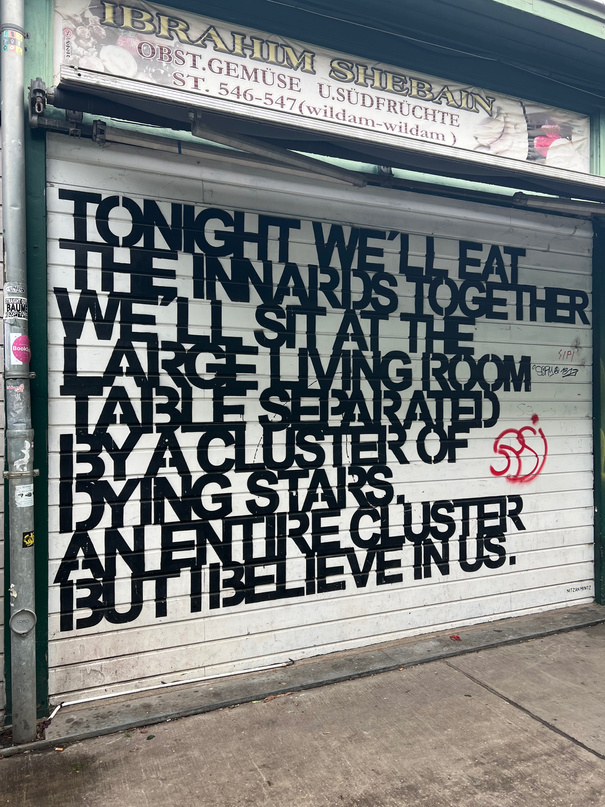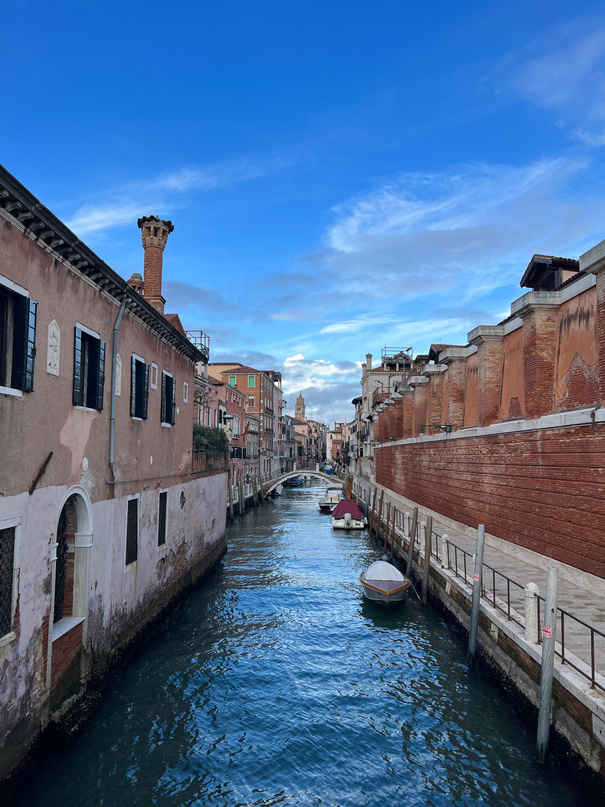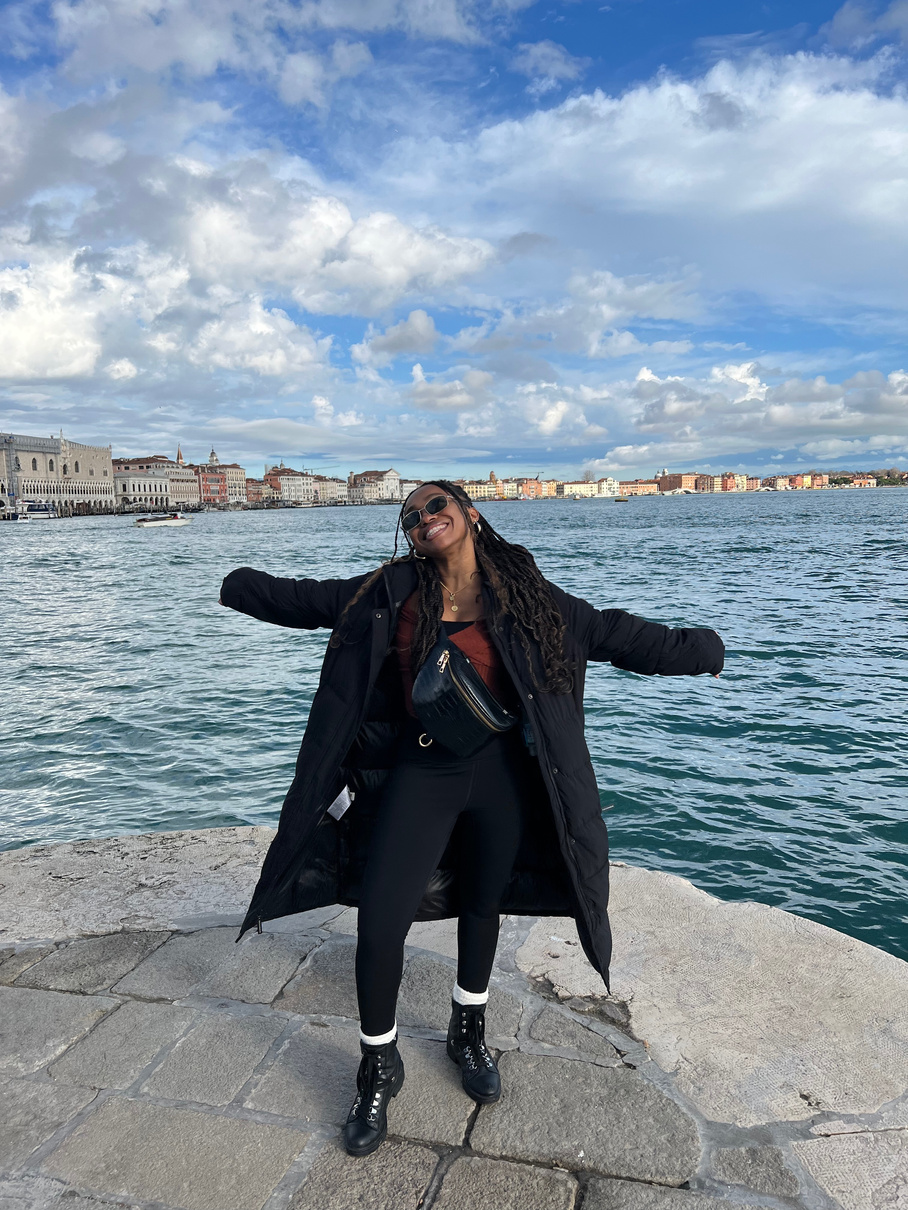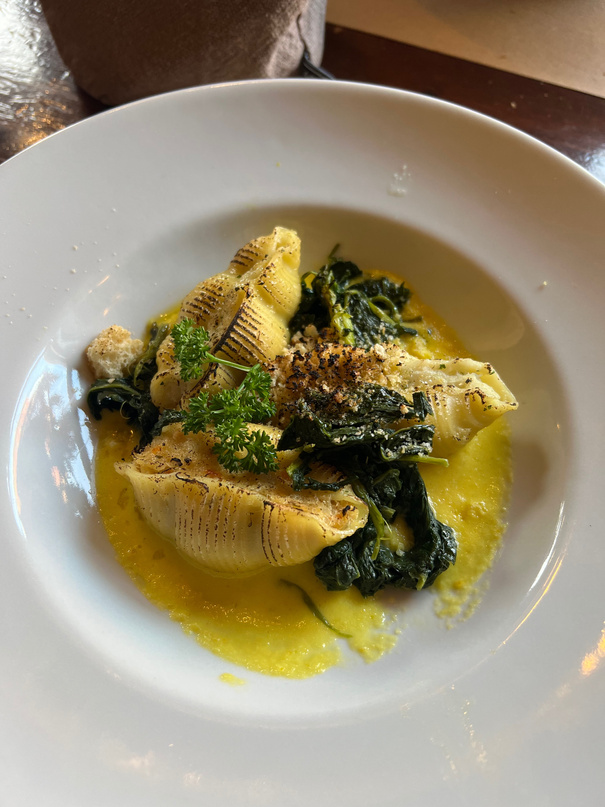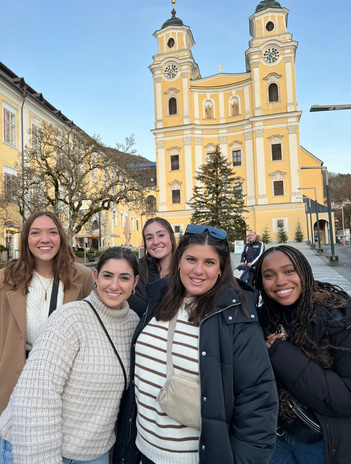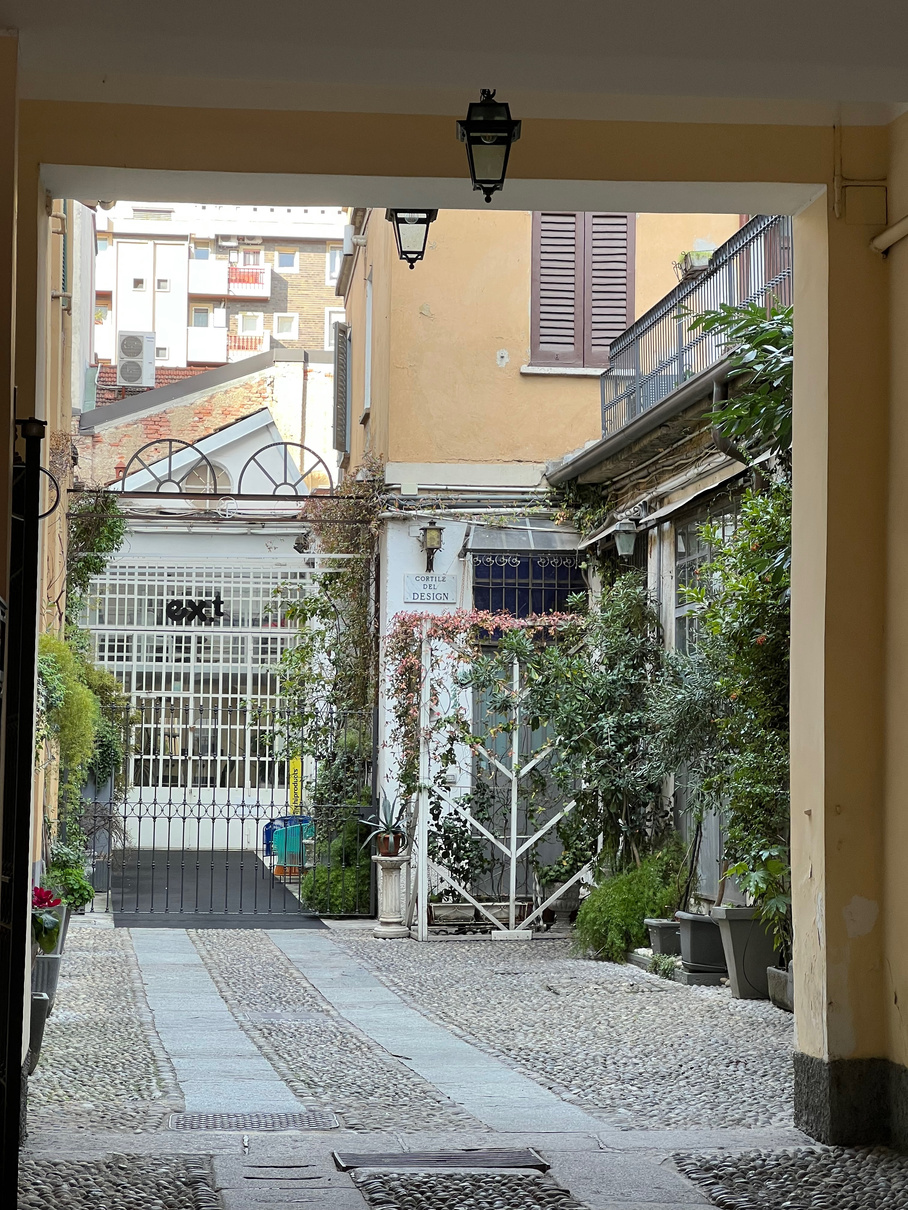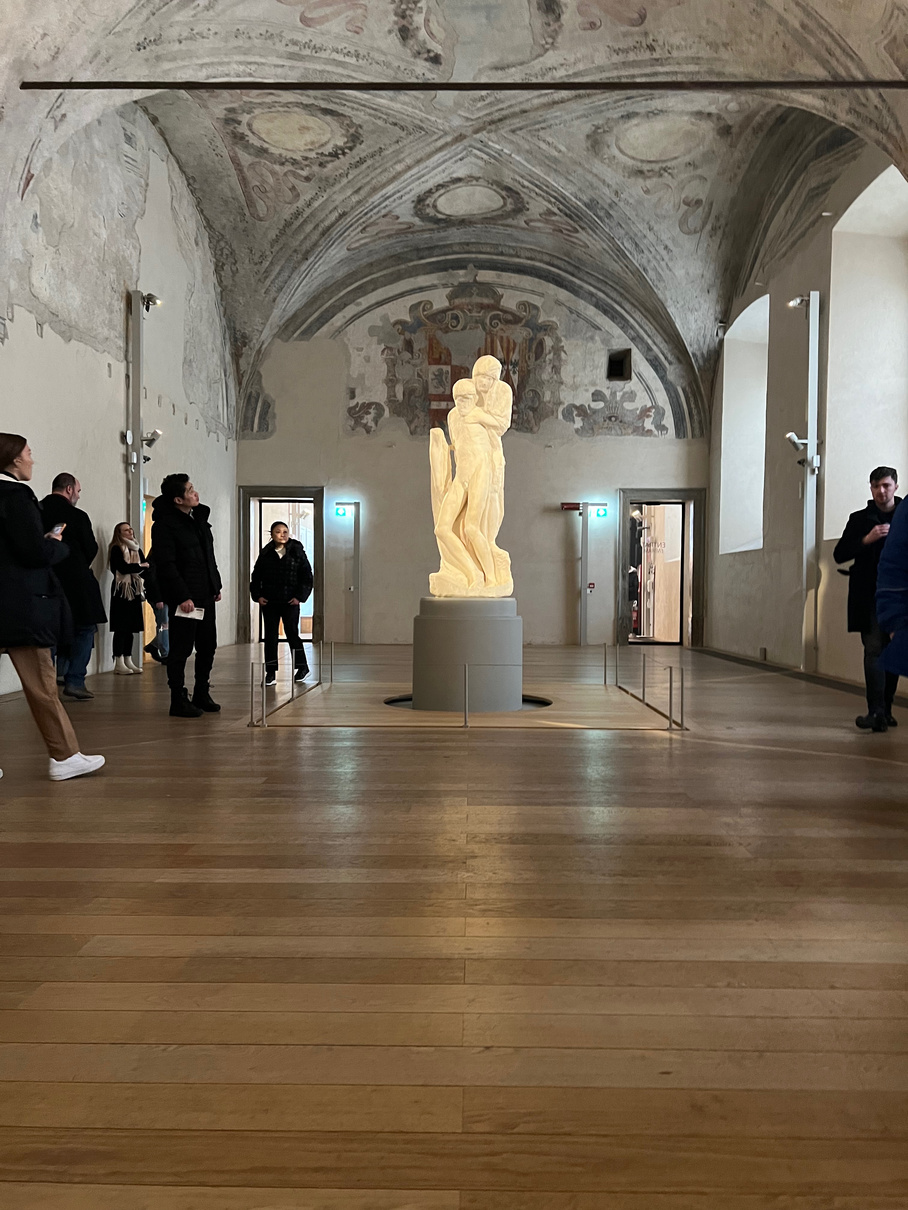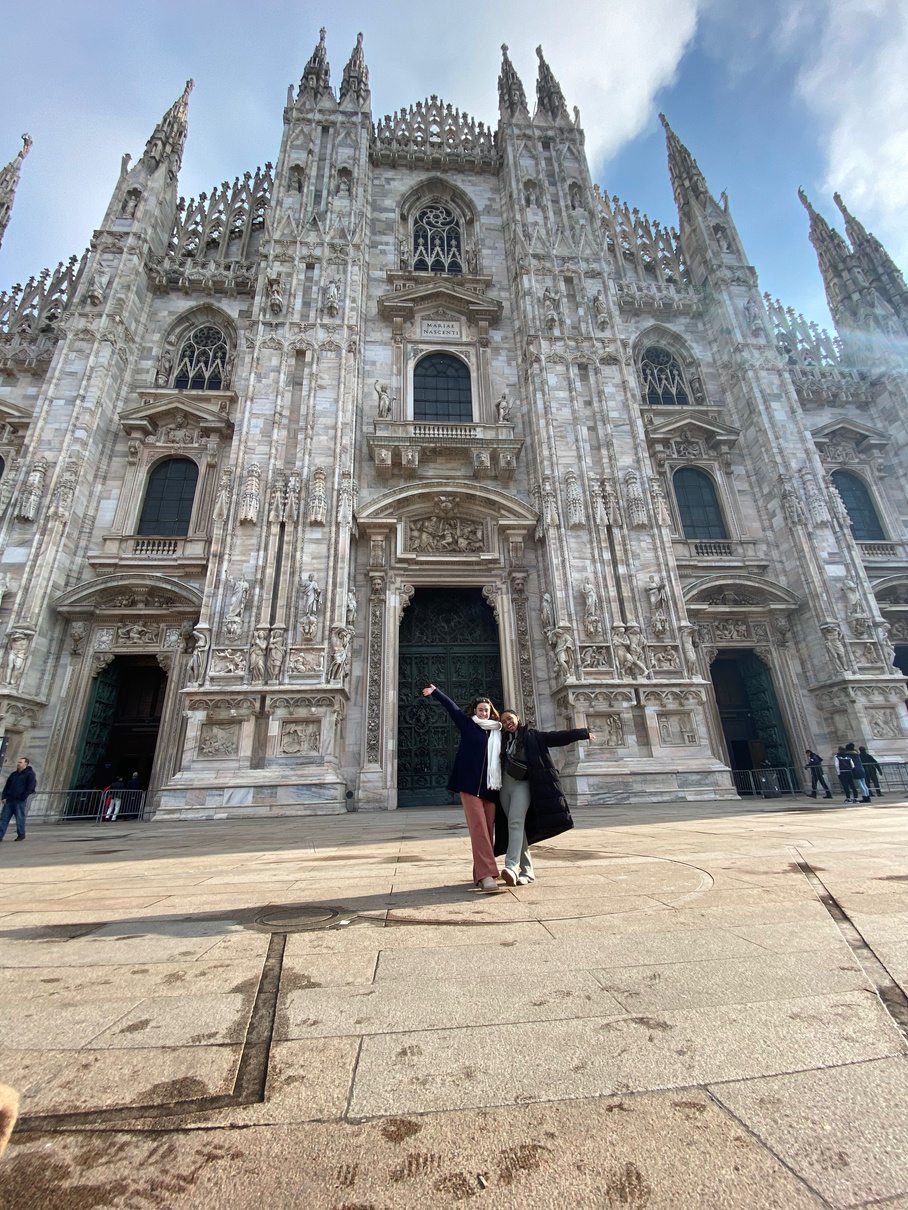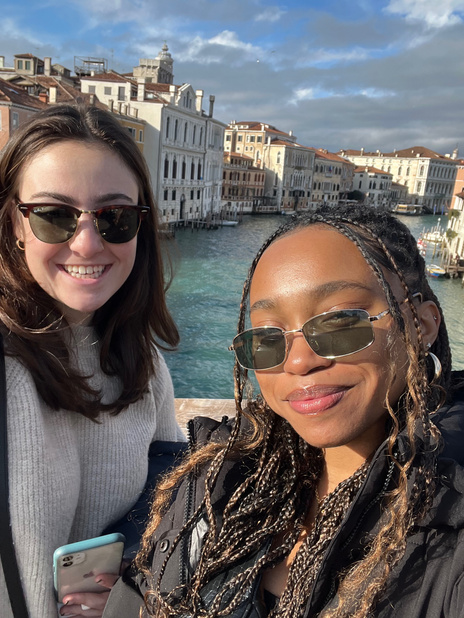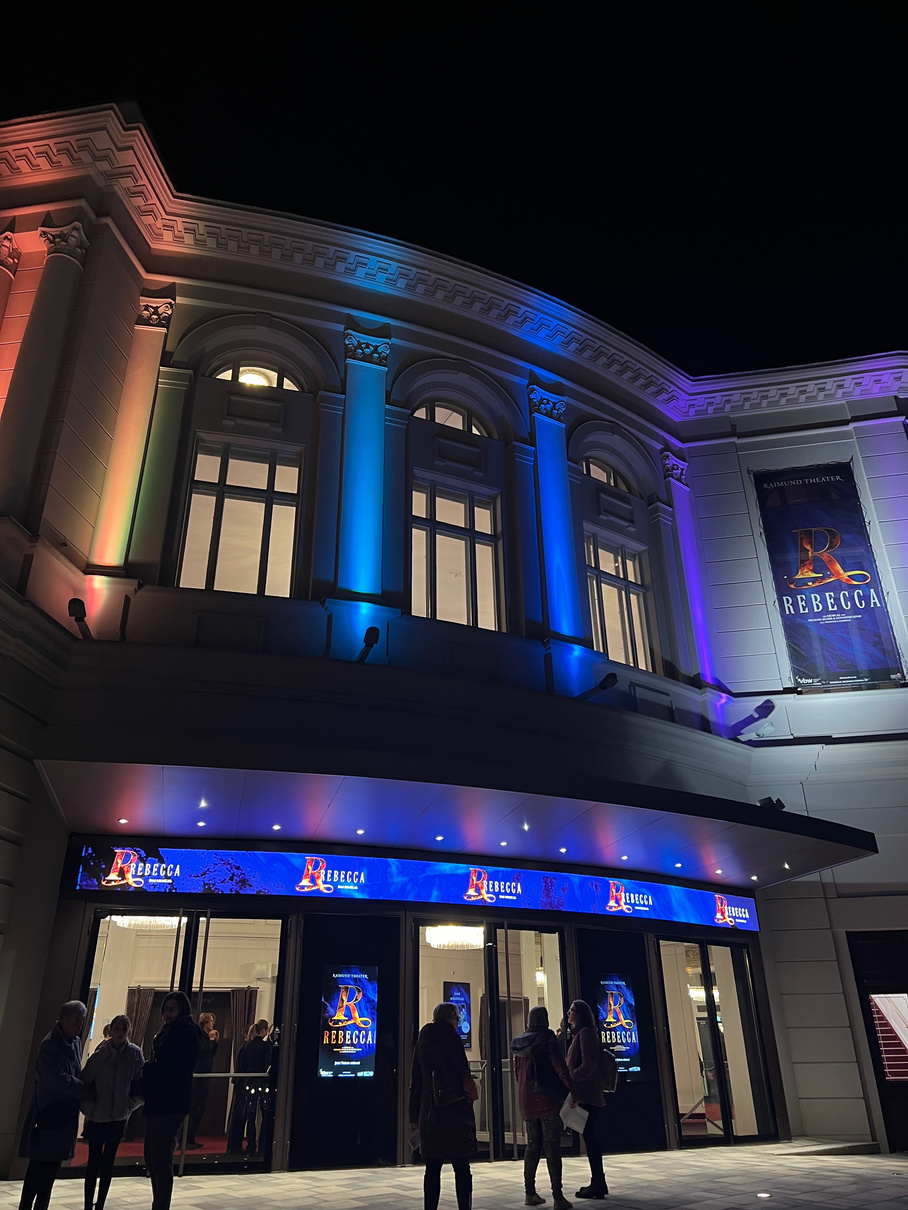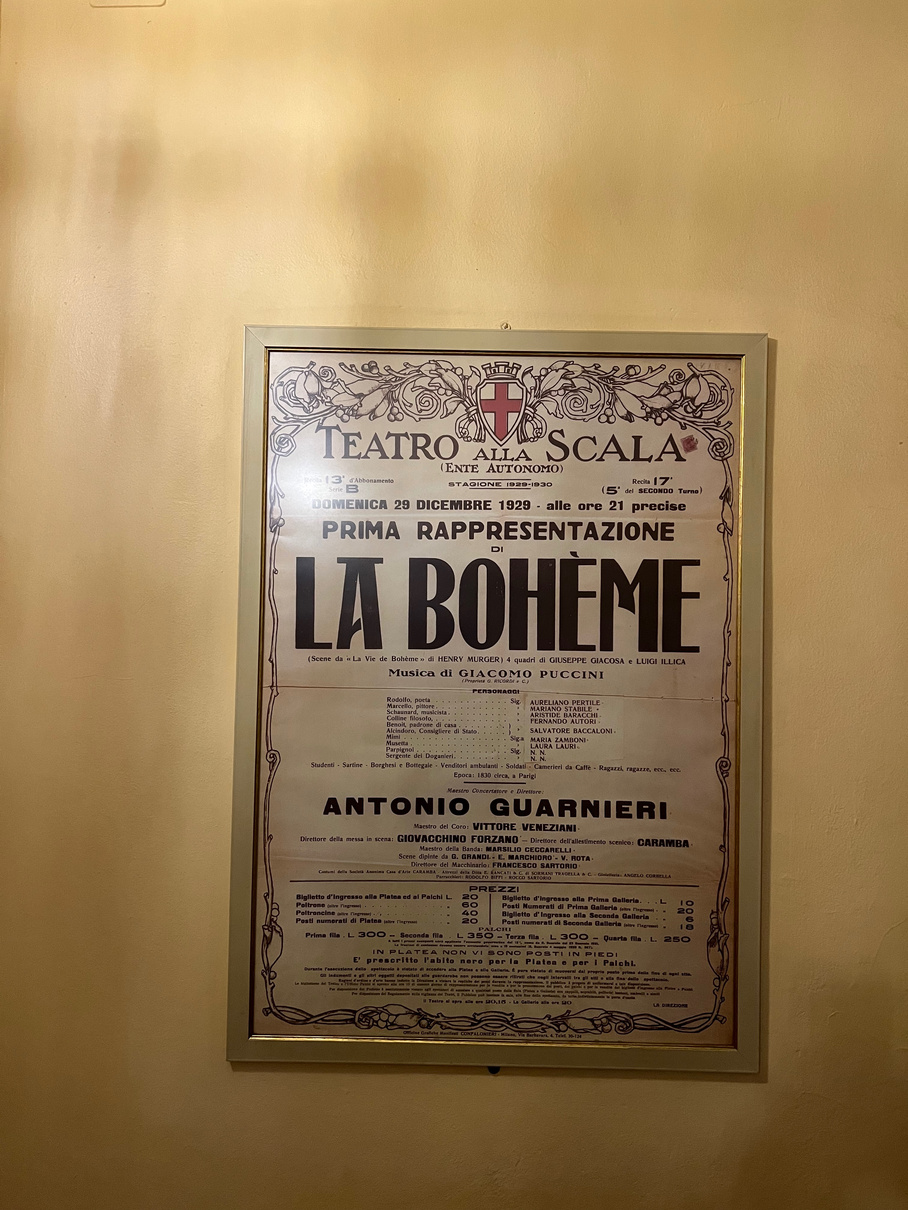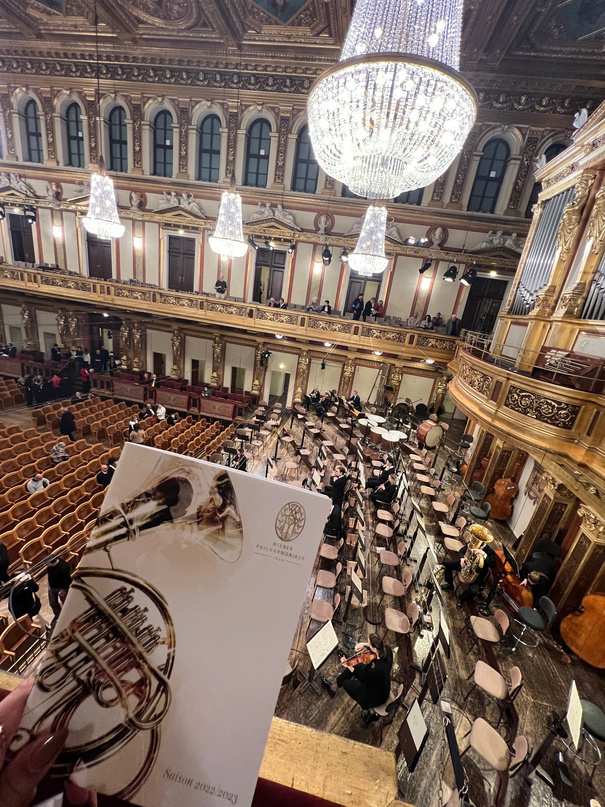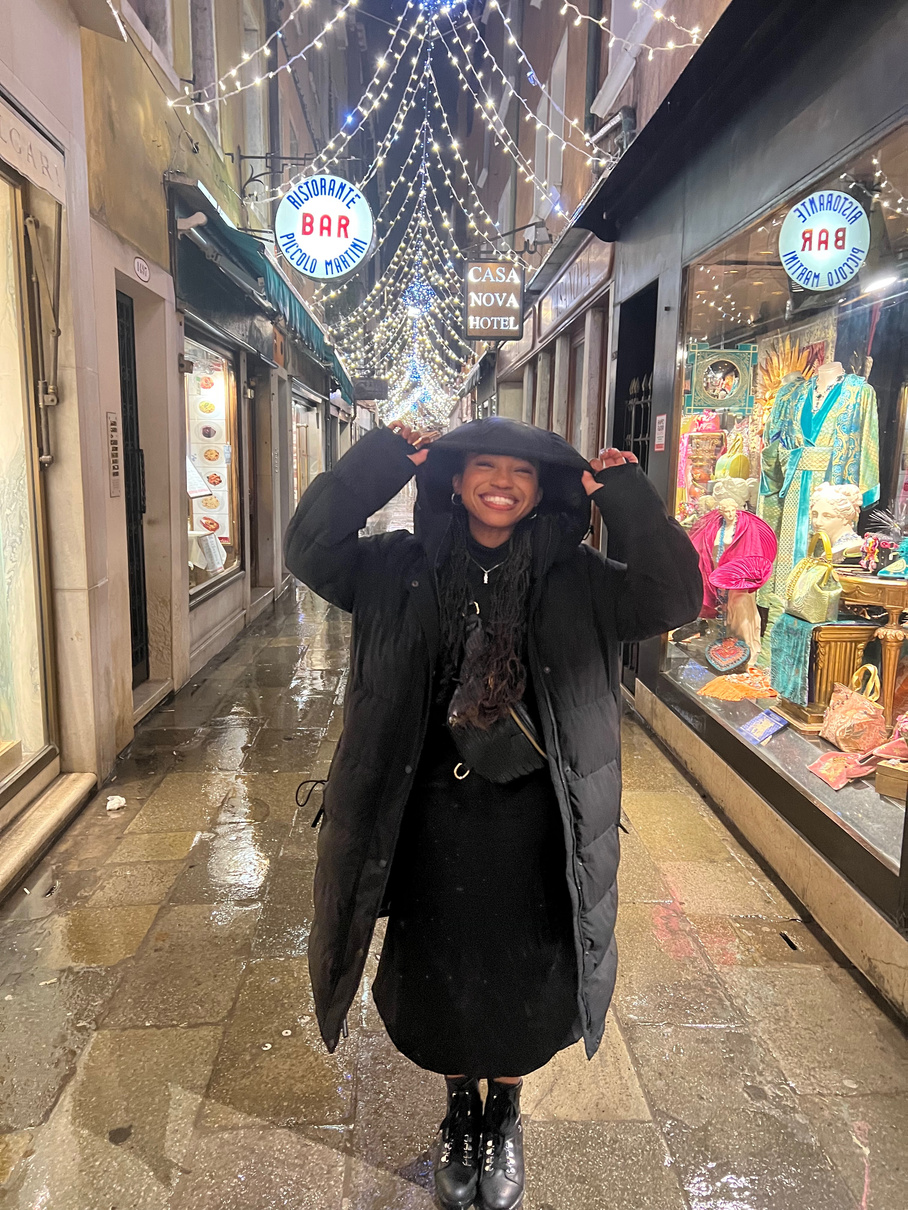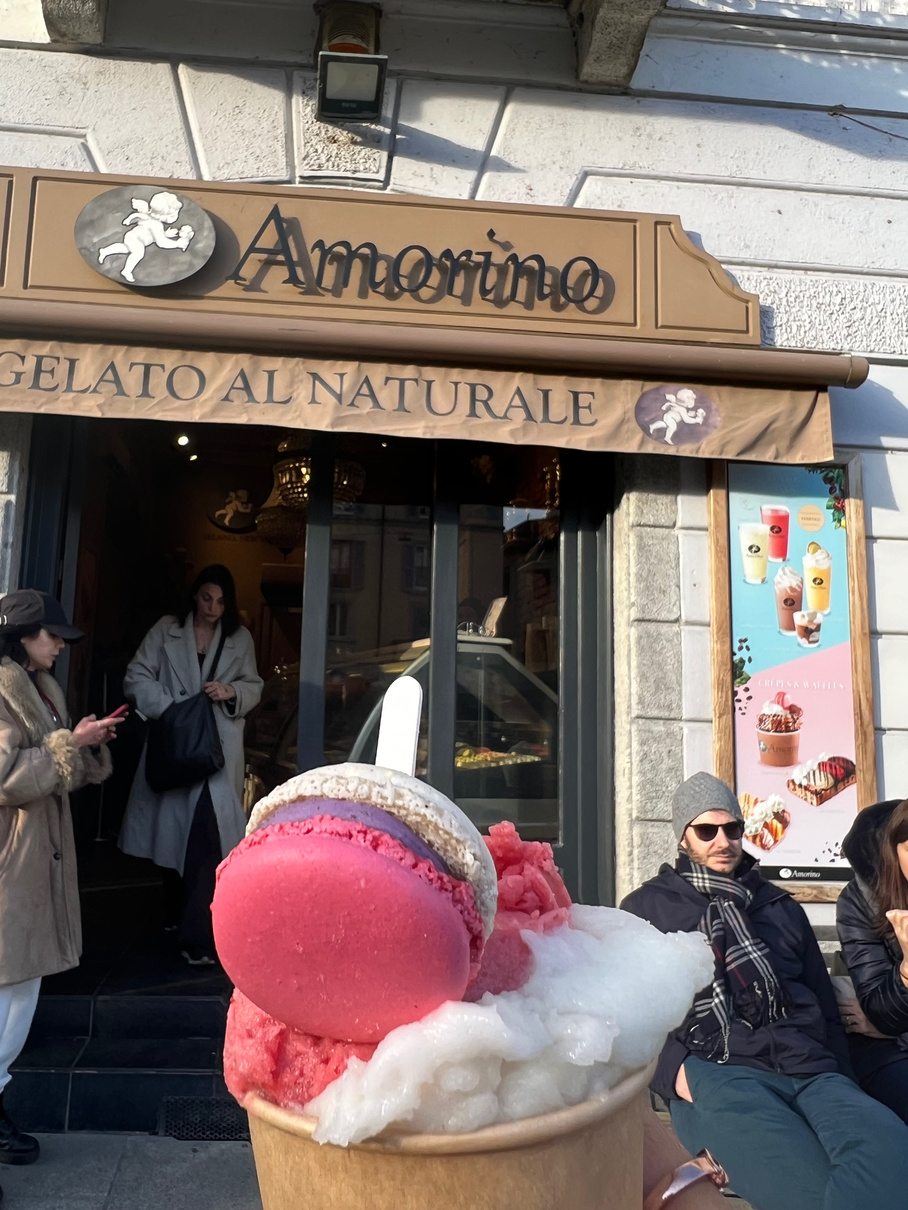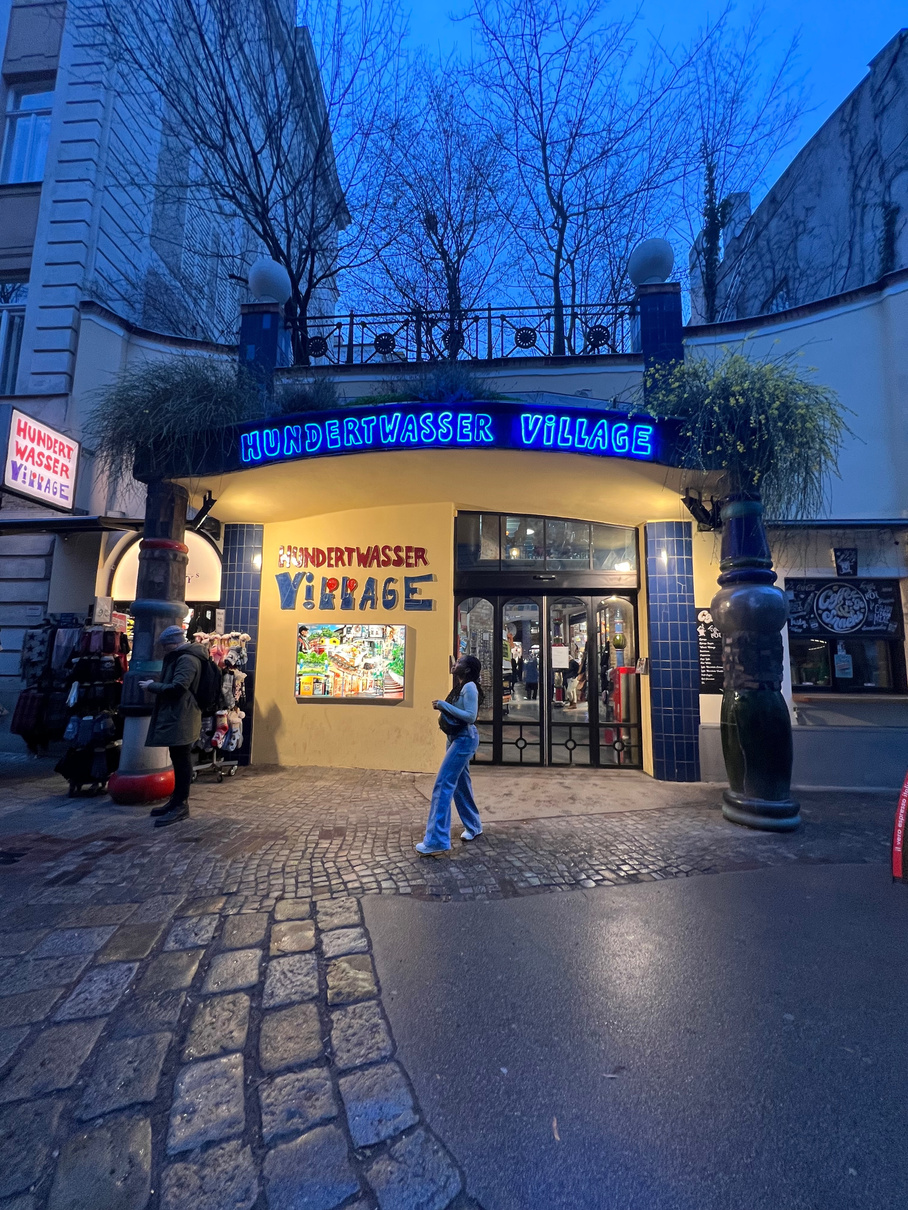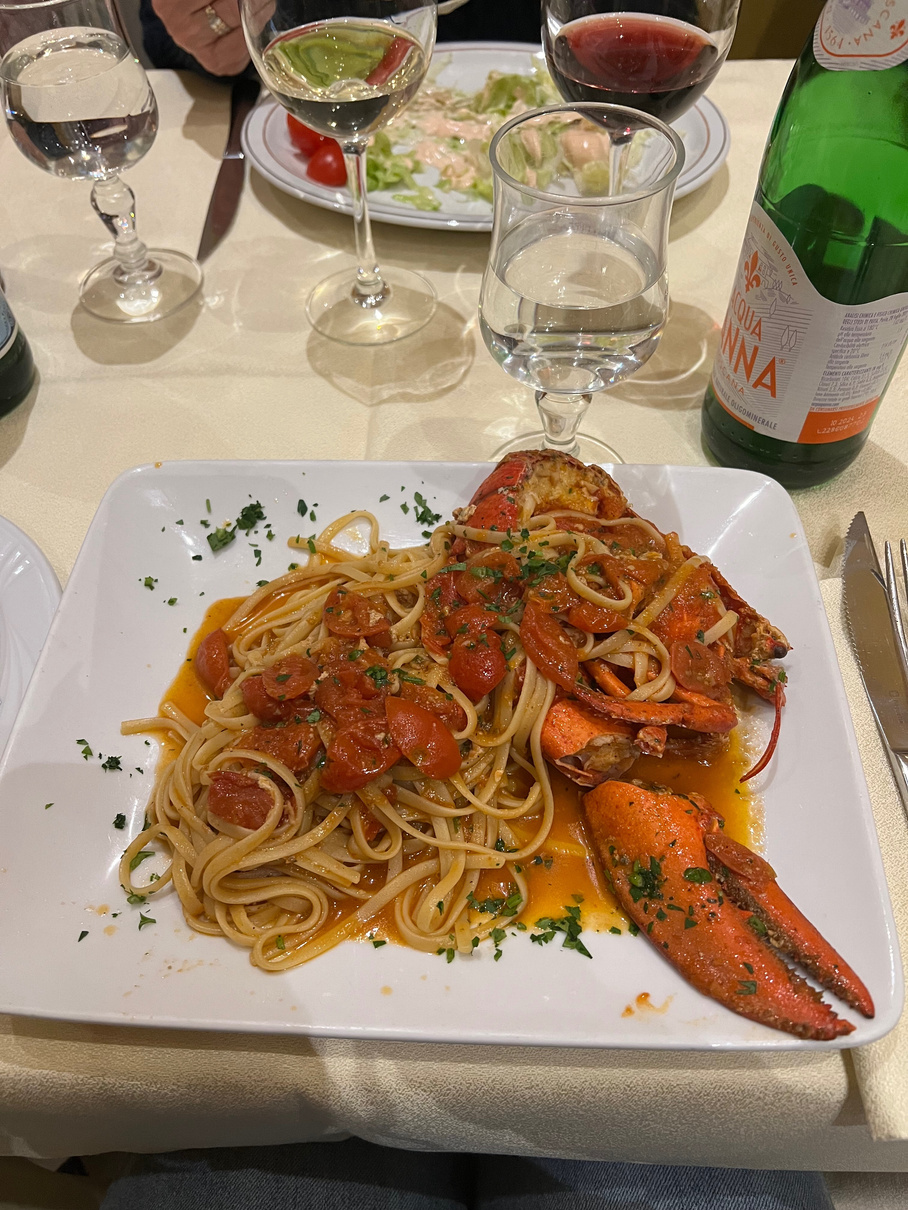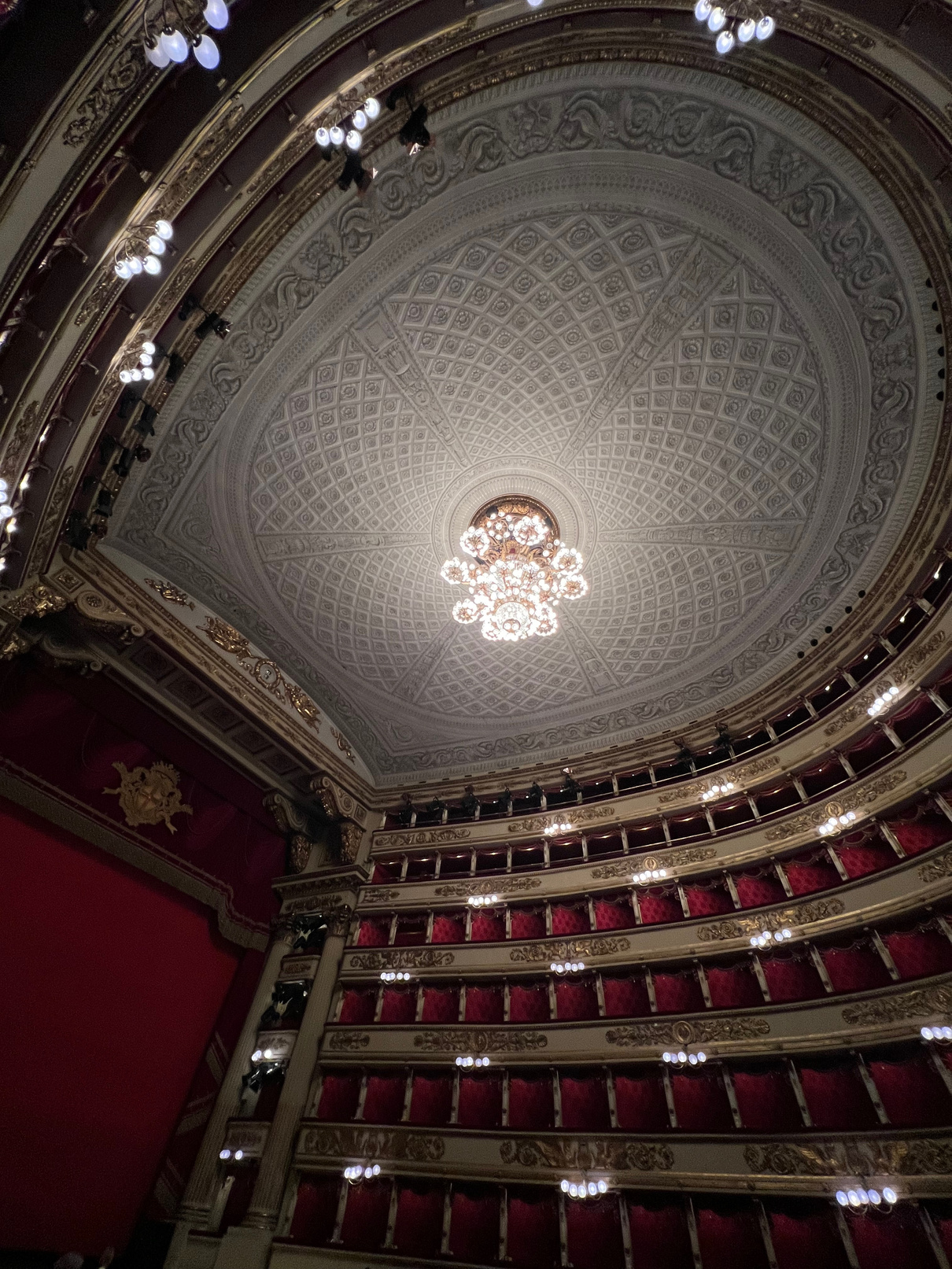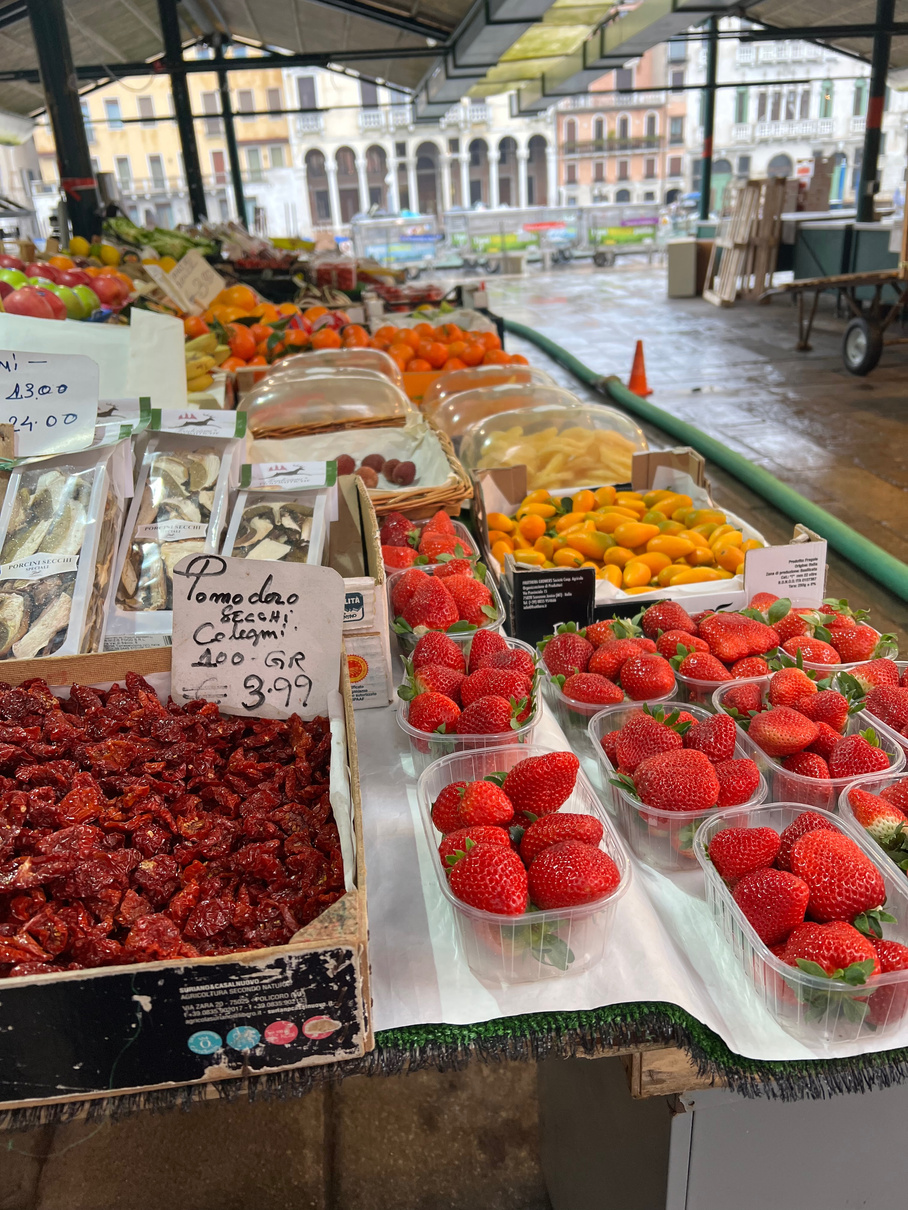Picture of me in
Venice, Italy!
What is a Reisebericht?
Hi there! I am Giselle Watts and this is my Senior Core
Capstone Project at Elon University. For my Core Capstone,
I participated in a study abroad class that traveled through
Austria and Italy studying the lives of the great composers.
As a Music Theatre major, this was a dream come true! So,
to complete and captivate my experience, I have put
together this reisebericht which means "travel journal"
in German.
Upon coming to Elon, I, of course, knew of their
amazing study abroad program and wanted to venture
out of the states, but I didn't know if I'd have that
opportunity with my classes and extracurricular
commitments. However, as you can see, it became
possible! I was able to find this particular class which occurs during our January term (J-term) and fulfilled a requirement I needed: my Core Capstone. The Elon Core Capstone is an integral part of everyone's study and completion of the core curriculum. According to the Elon University page on the Elon COR course, they exists as a way for students to integrate and apply what they have learned during their experience here. It works to challenge students to consider "larger themes of the program – ethical reasoning, personal and social responsibility, and global citizenship." And it certainly did that for me in so many ways!
What you are about to be privy to is a time capsule of sort. You will see my preliminary reflection upon taking the prep course in the fall, my in-the-moment reflections while being abroad, my research concerning the socio-economic relationship people have with theatre, and my final reflection having returned to finish out my senior year. So, thank you, and please follow along and feel free to explore as I share my journey through this website with you all:)
Picture of me at the Vienna Philharmonic!
Picture of me in the Palmenhouse
at the Schoenbrunn Castle
Preliminary Reflection
This is an initial reflection I had while taking my global prep course during the fall semester.
Giselle Watts
Professor Buckmaster & Professor Kier
Global 1260
20 September 2022
Preliminary Reflection Paper
As I reflect on my upcoming adventure abroad, I can’t help but think of the many courses
and experiences I’ve taken part in here at Elon that have led me to this point. As a Music Theatre
major and Creative Writing minor, I have always been influenced by the art around me and the
way it has the power to impact a community. Not only can art impact a community but it can
also form a community through how it is expressed and shared.
In my first year at Elon, I embarked on my first class that delved into various cultures and
viewpoints: Global Experience. Within this course, we discussed what it meant to be a global
citizen and to be better aware of civilizations and stories that differ from our own. As a result,
my hunger to learn about other places and people that differ from those I’ve come to know in
America grew. Later, in my sophomore year, I fulfilled my ELR credit by creating an outreach
program between the cast of the Bubbly Black Girl Sheds Her Chameleon Skin and the Boys and
Girls Club, and the Dream Center in Alamance County. The Music Theatre majors within the
cast visited the centers and taught the children dance numbers, what it means to be a Music
Theatre major, and the importance of representation in theatre. Through this experience, I
broadened my love for art education and worked to make art and performance more about giving
to the surrounding community. That year, I also began singing in an on-campus band called the
Elon Music Ambassadors. Through this class, I found new ways to express my art and share it
with a community of music lovers. Amazingly, it was through this class that I learned about this COR Capstone centered around music and studying the lives of great composers. My desire to
learn more about other cultures and the lives of those who lived before me was heightened
through my Victorian Literature class this past spring semester. This want to experience art,
whether music, writings, or drawings, has been heavily influenced by my creative upbringing
and pursuits, but my courses at Elon only enhanced my desire to learn all aspects of art on a
deeper level.
Honestly, there are multiple courses I would have loved to take and various majors and
minors I would have loved to add to my Elon experience. Those include, but are not limited to,
an Arts Administration major, a Music in the Liberal Arts major, a Photography minor, and a
Theatrical Design and Technology minor. Additionally, I had wanted to take sociology classes
centered around varying societal climates and environmental issues that need to be changed.
However, I still can’t help but believe that I am where I am intended to be and doing what was
destined for me. Knowing myself, I know that one day I will probably go back to school or take
on another practice to continue growing in knowledge and awe of this life we live, but I do
believe that I have continued to absorb all the wisdom and experiences that I can out of Elon.
The interdisciplinary nature of this course will aid in my continual quest for knowledge
and desire to learn more about various art forms and their history of such. As someone who
already studies theatre and music history, I am excited to dive deeper into what it looks like in
another country as well as how even from a varying location and time it has influenced the career
I am in today. I am excited to see how society is impacted by the art and literature shared. Music,
in itself, is a universal tool that intersects with religion, psychology, sociology, history, and
literature. Music has helped shaped societies and worlds through lyrics, concerts, artists,
performers, and scientists. It has provided wealth, insight into various periods, insight into the minds of individuals, and has been used to psychologically advance the learning capabilities of
generations. The art of music is that it connects us all no matter the person, place, or thing.
January 25, 2023
January 25, 2023
January 19, 2023
January 19, 2023
January 19, 2023
January 19, 2023
January 11, 2023
January 6, 2023
January 11, 2023
January 6, 2023
January 25, 2023
January 19, 2023
January 19, 2023
January 6, 2023
Literature Review
Where Does Socio-Economics Fit Onstage?
Race, Society, and Economy's
Relationship with
Theatre
Where Does Socio-Economics Fit on Stage?
Race, Society, and Economy’s Relationships with Theatre
Giselle Watts
17 February 2023
COR 4460
Introduction
As is the case for other artistic forms of expression no matter the decade or region, theatre is shaped by the societal climate that surrounds it. Race and class often inform the way theatre is consumed, and the economic status of consumers often inform what is presented. The way socio-economics can be so easily prevalent in opera and music theatre is amazing to consider and was even greater to ponder while experiencing it firsthand in Austria and Italy. However, this isn’t just a European or American thing; this is global, and it transcends generations of opera and theatre. By understanding the history of music, opera, the theatre and its audience members, one can better evaluate the relationship it has with race, society, and economics.
To begin, the purpose of music’s origin being mainly for storytelling, worship, and expression has only expanded as centuries of new musical invention have come about and continue to do so. One must know as Jingshu Liu and George Knepler, student of Guido Adler, know and understand that music cannot be observed in isolation as it has been an influencing factor in history along with being influenced itself (Liu p. 77). It’s connected to culture and society in more ways than one. We saw first hand how sonata-form and symphonic cycles are closely related to German-Austrian folk song and dance thus meaning that the symphonic cycle originated through inspiration of music life and societal norms (Liu p.77). Though this form of classical music is normally reflected by wealthy elites and bourgeoisie, it has become urbanized, and America has taken the genre of classical music, more specifically opera, and attempted to democratize it. America has made it a point to make it more attractive to larger audiences and not just those “wealthy and musically educated” (Levy p. 1). As Kyona Willis-Lynam says, “Opera, as an art form, will continue to hold as strong of a place in the arts as Shakespeare does today. It is how we continue to present opera that will make the difference” (Willis-Lynam p. 68). Opera companies are starting to understand, along with musical companies who are producing more pop/rock theatre pieces, that to stay relevant to the public they must shift along with the social interests and the economy.
Knowingly, the commodification and the accessibility of theatre are often at odds with one another because the performers and the audience members are not just “cultural agents who communicate with each other but [are] also economic partners whose relationship is determined by supply and demand” (Marx p.130). Some may argue that the difficulty in balancing the two is due to the diversity and development of competing theatres, so this poses the question: should the modern theatre be so commercialized? Well, as Henry Sherek points out in his journal, that’s one of the main reasons why theatre was invented; it was made to fill seats and as a result, make a profit (Sherek p. 442). So, its commercialization and heavy influence on society are expected along with the expectation of its reflection of one’s society. Nevertheless, these characteristics and the level of accessibility it has today could be what makes theatre less of a commodity to differing circles.
Race
One might question whether race truly has influence on theatre, but one must remember the continuous gift that is Rent by Jonathan Larson to many underrepresented communities who finally saw themselves on stage; this being through a reimagined work of the opera La Boheme by Giacomo Puccini. These particular pieces can also be paralleled to the impression Miss Saigon has left in the art and Asian community, another reimagined opera by Puccini entitled Madama Butterfly (Chung 62). Both shows offer representation but also a look into other cultures, races, and pieces of life and history that had been overlooked. This also broadened one of the main goals of theatre, which is connecting with its audience. It openly made theatre for everyone.
Karen Henson in her journal entitled Engaged Opera, shares how Gershwin’s Porgy and Bess continues to attract African-American audiences because it allows them to see Black actors and stories on stage (Henson). In her words, it creates a “we” that is not often heard from in this form of theatre and is honestly not seen as the majority in opera audiences. This show invited African-Americans to see themselves on and off stage in a more respectful light compared to the horrendous minstrel shows of the past.
However, opera and Europe were found to be more accepting, at least towards Mattiwilda Dobbs, the first African-American opera singer to sing at La Scala Theatre in Milan. She was born into a southern African-American bourgeoisie family who wasn’t set back by her race or her class but her location. Interestingly, America had fewer opportunities for performers than Europe (Baker p. 61). Not only did her country pose a “threat” to her career but her Southern background; some assumed that because of her aristocratic family, she couldn’t be considered a “rags to riches” story thus hindering the publicity of white-media. However, to my astonishment and others as well, this belief is proved wrong by the success of her career regardless of race, location, and class.
So, theatre has taken many strides in welcoming more communities on stage and in the seats, but there is always room for improvement. As Greg Evans pointed out in an article that studied the relationship between BIPOC individuals and theatre within New York City, “the net gain for hiring of Black, Indigenous and People of Color (BIPOC) actors was only 0.5% higher than the previous year and most of the gains came in chorus roles” while white actors continue to take up two-thirds of the roles available (Evans). This is even further seen in Austria at the performance of Rebecca the Musical. There were only two actors of color as leads and possibly one more in the ensemble. While this is reflective of the time in which theatre began, we have moved way past that; it’s time for more diverse stories to be heard.
Economy
As mentioned before, one of the main reasons for theatre is to make a profit. Consequently, the economy can’t help but influence theatre, how it’s consumed, and what is presented. Derek Scott shares in his journal on Music and Social Class in Victorian London how composers began to depend on the pockets of the bourgeoisie for their livelihood (Scott p. 60). With the expansion of essentially a commercial music industry, “popular” changed from “well known to well received to successful in terms of sheet music sales” (Scott p. 60). That was the 19th century. However, two hundred years later, we are faced with the same idea of popularity. Studies explain how often an audience member will only purchase tickets based on the familiarity of a show, the music genre, or simply the title (Wollman p. 145). Additionally, as audiences start to see more shows like Hamilton, MJ, and Once Upon a One More Time, shows such as Ragtime, Phantom of the Opera, and Les Miserables can get left behind.
Furthermore, Colbert takes it even further to say that the nature of the source material, standard of performance, and overall standard of the script, text, score, and translation speak to whether someone would purchase a ticket for a show and for how much (Colbert p. 9). These factors impact the choice of full-priced tickets in the orchestra, mezzanine, balcony boxes and discount-priced tickets in the orchestra or somewhere with an obstructed view (Leslie p. 522). As mentioned before, Rent created an opportunity for audience members to see themselves within a show that hit so close to home at the time and reflected the social climate of America. However, Rent didn’t only pave the way racially and socially, but Jonathan Larson also created a way for students and individuals not a part of high society to see the show. Jonathan Larson created $20 tickets for consumers who would come to the theatre just before doors opened (Melich). Eventually, rush tickets became more prevalent, and even now, raffle tickets have become a common way to see a show. However, there still remains the problem of price fluctuation which ultimately depends on the consumer and can change throughout the week or even the day depending on demand. As Marta Zieba points out for German public theatre, as the demand and attendance go down in reflection of the economy, what will be left to consume (Zieba p. 88)?
Society
Oftentimes, the fall or rise of society can be the tipping point that brings along new works and innovations. Interestingly, the introduction of comic opera in Paris was during a financial and political crisis. Because of this, its purpose began to overlap between those there for the music and aesthetic, and others there to pose a political statement thus “becoming a symbol of the emerging public sphere” (Alano p. 25). The aesthetic opera-goers reflect the “intellectual class” found in Willis and Grisolia’s latent class model of theatre demand (p. 113). According to them, there are three classes of people that attend theatre:
“[the] 'main class' [which] comprises mainly affluent people who show a strong preference for main theatre venues [...] and like all types of shows. The second is a 'popular class', exhibiting the smallest willingness to pay and manifesting a strong preference for comedies, paying little attention to venues and disliking more sophisticated shows. The third is an 'intellectual class' of theatre goers, who exhibit the maximum willingness to pay, and show a strong interest for drama and adaptation of productions, and more independent aesthetic judgement” (Willis & Grisolía p. 113).
And all of these people within these classes pay various prices to analyze theatre in varying ways and go for different reasons. They make up the supply and demand for the shows that are produced via what’s in their pockets and what’s in their heart.
As we know, society continues to shift and grow with the times, and this is greater reflected in the diversity of audience members. Egan and Pinchback share in “Staging Scores: Devising Contemporary Performances from Classical Music” how creators are creating re-constructing/re-orchestrating narratives and orchestrations in order to “reconfigure the relationship between audience and performer into an immersive and embodied ‘theatricalised concert’” (Egan and Pinchback). In doing these, it makes operas such as Verdi’s La Traviata more relatable to the audience and literally shifts to mirror a 21st-century society rather than the 19th century in which it was written. This theory that classical music can furthermore be integrated into pop culture and action of imagery alongside music providing a different message is even more confirmed by Pontara’s study on classical music’s relationship with society and cinema. Furthermore, this idea of theatre becoming more popular, liked, accepted, accessible, and engaged with more frequently is beautifully said by Naomi Andre in “Black Opera: History, power, Engagement.” She says:
“The list of hurdles to opera’s accessibility continues. One of my goals is to show in print what I have experienced in real life many times: opera can be relevant, provocative, and empowering. Opera is an art form that has potential for being a site for critical inquiry, political activism, and social change […] The audiences I envision in this book are vast. They encompass a diversity of publics and include the people I sit next to in opera houses across the world; my friends who are opera lovers; my friends who do not know much about opera but are willing to learn more; and the many students I teach in my classes…” (Andre p. 193).
Conclusion
As one can see, theatre has an overarching relationship with the world. It’s a living thing that grows, develops, learns, impacts, and ages with time. It mirrors the truth of life and encapsulates the history we want to forget and need to remember. Theatre is expansive and covers devised work, straight plays, operas, and cinema. Theatre is a collaborative performing art form that involves all types of performers, producers, directors, writers, and audiences to come together to experience a real or imagined event and ask all while there to witness, to be a part, and do something. Although the popularity of the art form fluctuates, the impact never dies. As Miller says in “Average Broadway,” for the past century, over 9,300 productions of over 7,600 shows have occurred on Broadway, and that’s just one street (Miller 529). So as food for thought, I leave you with his words:
“We must explain, however, not simply the static situation of art in a Bourdieuian field of prestige and popularity, but also the dynamic interaction between each artwork and the field, the way in which each show both shapes and is shaped by the field in which it appears” (Miller p. 553).
Work Cited
Alano, Jomarie. “The Triumph of the ‘Bouffons: La Serva Padrona’ at the Paris Opera, 1752-1754.” The French Review, vol. 79, no. 1, 2005, pp. 124–35. JSTOR, http://www.jstor.org/stable/25480134. Accessed 5 Dec. 2022.
ANDRÉ, NAOMI. “Engaged Opera.” Black Opera: History, Power, Engagement, University of Illinois Press, 2018, pp. 1–26. JSTOR, https://doi.org/10.5406/j.ctv80cb7d.4. Accessed 6 Dec. 2022.
Baker, Lindsey, "Mattiwilda Dobbs: A Study of Race, Class, and Gender in Opera." Thesis, Georgia State University, 2017.
Chung, Tzu-I. “The Transnational Vision of Miss Saigon: Performing the Orient in a Globalized World.” MELUS, vol. 36, no. 4, 2011, pp. 61–86. JSTOR, http://www.jstor.org/stable/23048513. Accessed 5 Dec. 2022.
Colbert, François, et al. “The Importance of Ticket Prices for Theatre Patrons.” International Journal of Arts Management, vol. 1, no. 1, 1998, pp. 8–15. JSTOR, http://www.jstor.org/stable/41057849. Accessed 5 Dec. 2022.
Evans, Greg. “New York Theater Remains Overwhelmingly White, Marginalized Communities “Vastly Underfunded”, Study Finds” New York Times. 18 June 2021. https://deadline.com/2021/06/visibility-report-broadway-diversity-aapac-theater-funding-predominantly-white-1234777827/. Accessed 15 Feb. 2023.
Grisolía, José M., and Kenneth G. Willis. “A Latent Class Model of Theatre Demand.” Journal of Cultural Economics, vol. 36, no. 2, 2012, pp. 113–39. JSTOR, http://www.jstor.org/stable/43549819. Accessed 5 Dec. 2022.
Henson, Karen. "Black Opera, Operatic Racism and an ‘Engaged Opera Studies’."Journal of the Royal Musical Association, vol. 146, no. 1, 2021, pp. 219-230. ProQuest, https://elon.idm.oclc.org/login?url=https://www.proquest.com/scholarly-journals/black-opera-operatic-racism-engaged-studies/docview/2730704543/se-2, doi:https://doi.org/10.1017/rma.2020.27.
Leslie, Phillip. “Price Discrimination in Broadway Theater.” The RAND Journal of Economics, vol. 35, no. 3, 2004, pp. 520–41. JSTOR, https://doi.org/10.2307/1593706. Accessed 5 Dec. 2022.
Levy, Daniela Smolov. “DEMOCRATIZING OPERA IN AMERICA, 1895 TO THE PRESENT.” Stanford University, May 2014. http://purl.stanford.edu/ys875gk2432. Accessed 5 Dec. 2022.
Liu, Jingshu. “Introduction to the Structural History of Music.” International Review of the Aesthetics and Sociology of Music, vol. 41, no. 1, 2010, pp. 73–89. JSTOR, http://www.jstor.org/stable/27822864.
MARX, PETER W. "Consuming the Canon: Theatre, Commodification and Social Mobility in Late Nineteenth-Century German Theatre." Theatre Research International, vol. 31, no. 2, 2006, pp. 129-144. ProQuest, https://elon.idm.oclc.org/login?url=https://www.proquest.com/scholarly-journals/consuming-canon-theatre-commodification-social/docview/221554347/se-2.
Miller, Derek. “Average Broadway.” Theatre Journal, vol. 68, no. 4, 2016, pp. 529–53. JSTOR, http://www.jstor.org/stable/26367449. Accessed 5 Dec. 2022.
NANCY MELICH THE SALT,LAKE TRIBUNE. "The Dreams that RENT is made of; `Rent': Larson's Take on `La Boheme'." The Salt Lake Tribune, Nov 22, 1998, pp. E1. ProQuest, https://elon.idm.oclc.org/login?url=https://www.proquest.com/newspapers/dreams-that-rent-is-made-larsons-take-on-la/docview/288881684/se-2.
Pinchbeck, Michael David, and Kevin Egan. “Staging Scores: Devising Contemporary Performances from Classical Music.” Open Library of Humanities, vol. 8, no. 1, Jan. 2022. olh.openlibhums.org, https://doi.org/10.16995/olh.4684.
Pontara, T 2021 Art Music, Perfection and Power: Critical Encounters with Classical Music Culture in Contemporary Cinema. Open Library of Humanities, 7(2): 3, pp. 1–25. DOI: https://doi.org/10.16995/olh.4675
SCOTT, DEREK B. “Music and Social Class in Victorian London.” Urban History, vol. 29, no. 1, 2002, pp. 60–73. JSTOR, http://www.jstor.org/stable/44613294. Accessed 5 Dec. 2022.
SHEREK, HENRY. “CAN THE MODERN THEATRE BE COMMERCIAL?” Journal of the Royal Society of Arts, vol. 111, no. 5082, 1963, pp. 441–55. JSTOR, http://www.jstor.org/stable/41369263. Accessed 6 Dec. 2022.
Willis-Lynam, Kyona. “The Crossover Opera Singer: Bridging the Gap Between Opera and Musical Theatre.” Ohio State University, 2015. https://etd.ohiolink.edu/apexprod/rws_etd/send_file/send?accession=osu1449161062&disposition=inline.
Wollman, Elizabeth L. “Interlude 4: Economics and Marketing.” The Theater Will Rock: A History of the Rock Musical, from Hair to Hedwig, University of Michigan Press, 2006, pp. 142–57. JSTOR, http://www.jstor.org/stable/10.3998/mpub.119496.12. Accessed 5 Dec. 2022.
Zieba, Marta. “Full-Income and Price Elasticities of Demand for German Public Theatre.” Journal of Cultural Economics, vol. 33, no. 2, 2009, pp. 85–108. JSTOR, http://www.jstor.org/stable/41811017. Accessed 5 Dec. 2022.
Independent Research Itinerary
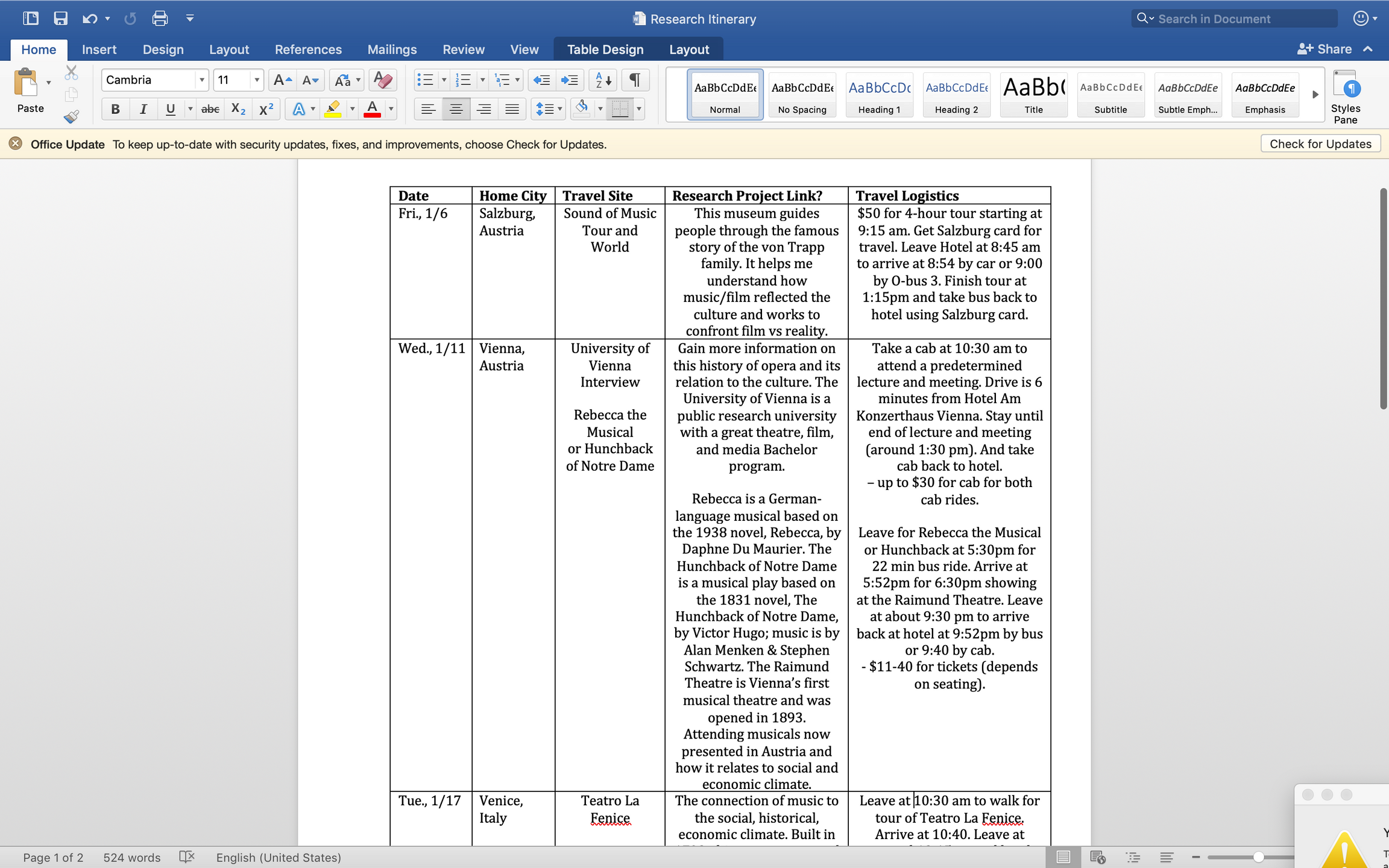
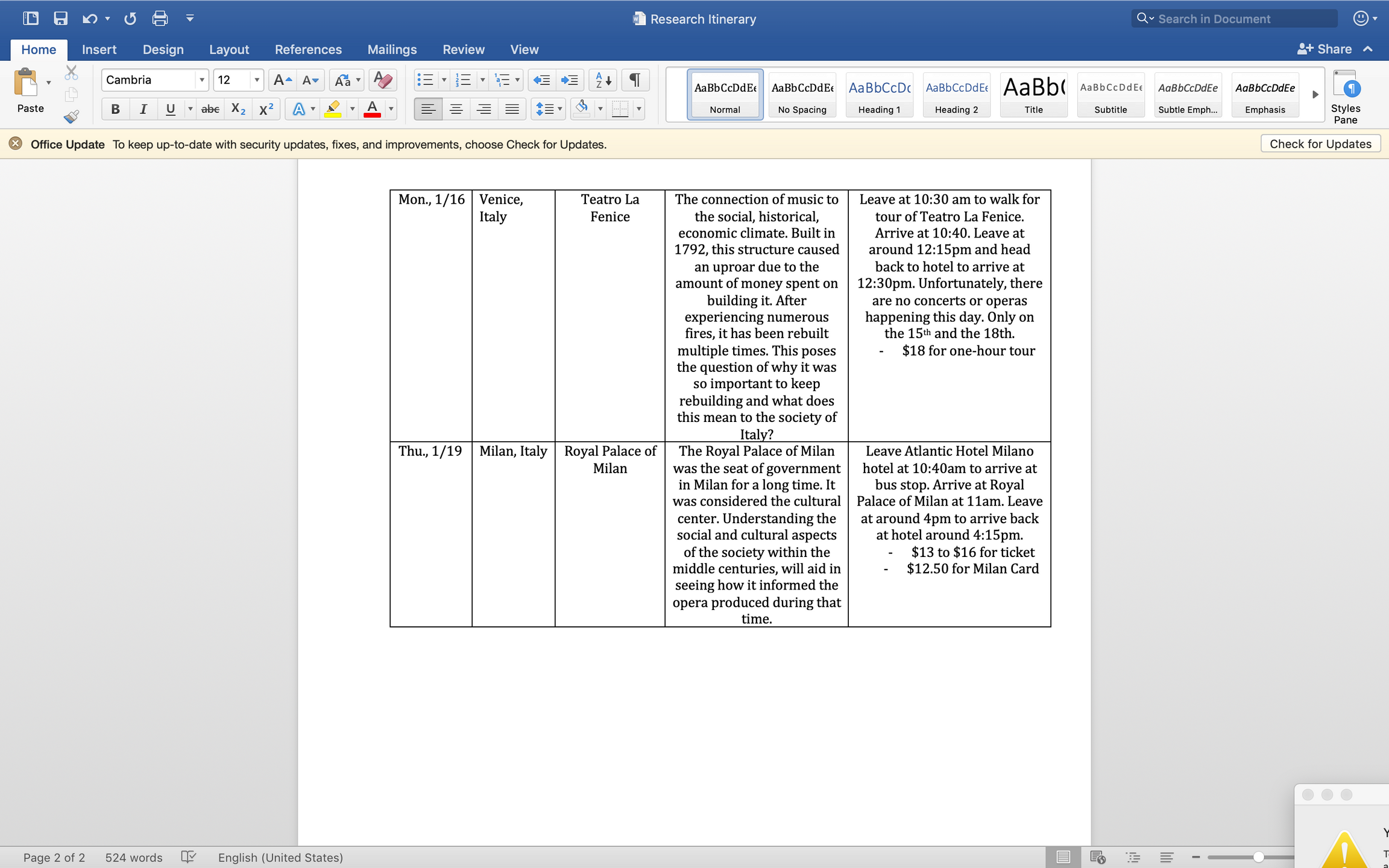
Me sending out my postcards on
one of the last days in Italy!
Final Reflection
Here's my final reflection after going abroad and partaking in one of the best learning experiences ever!
Giselle Watts
Professor Buckmaster & Profesor Kier
COR 4460
17 February 2023
Final Reflection
In looking back at my preliminary reflection paper, I couldn’t help but feel joy and immense gratitude to have received fulfillment in my goals concerning this trip. Before embarking on this time abroad, I wanted to experience culture from an immersive and educational point of view as well as experience art from a sociological and historical lens. I looked forward to the interdisciplinary nature of this Core Capstone course and the intersectionality it had with my Music Theatre major, Creative Writing Minor, and varying interests. In engaging in this course and going abroad, I saw firsthand how art can impact a community and researched how it has the power to form community through how it is shared.
Interestingly, I had mentioned in my preliminary reflection the multiple courses I wish I had taken in previous semesters. However, now in my final semester at Elon, I can’t help but feel at peace with the courses I’ve taken and the opportunities I partook in because I wasn’t enrolled in 25 credit hours worth of courses! Additionally, I am thankful for the classes I did take prior to studying abroad. I wouldn’t have been able to successfully complete this course, foster my research, and actually participate in studying abroad during J-term if I hadn’t taken the steps I did.
In my research, I was able to look through a global lens when it came to addressing the connection society, economics, and race has with theatre. Before traveling, I knew of its intersectionality from what I had seen in the states through research, daily conversations within my department and major, and social media. However, within Europe, the idea of intersectionality was almost blatant as history was everywhere they walked and the impact it had on them today; they continually engaged in conversations concerning current and past art, its presentation to current society, and the economic response to it (i.e. who comes to the opera and why, overpopulated places due to tourists, school field trips to museums).
Furthermore, I am glad to have vividly and expediently dive deeper into what theatre and music history looks like in another country. My blog posts are very telling of my trip and added a concise way of journaling aside from my own personal writings, pictures, and ways of capturing memories. Seeing Salome at the Teatro Alla Scala in Milan, Italy and Rebecca the Musical in Vienna, Austria were both experiences that I will never forget. Both opportunities fueled my love for the art form of theatre even more, and it made me grateful to do the work that I do. Though the language and expression of art may change depending on location, it still provokes emotions of community and passion that is unlike any other. I saw right before my eyes how society is impacted by art and literature within the city of Salzburg. They carry the legacy of Mozart and the music he shared through journals, concerts, and relatives with them throughout the city. In visiting the Catholic mass at the Duomo Cathedral in Milan, I saw the universality of music and its intersection with history, society, religion, and economics as people of varying backgrounds and faiths filled the pews and paying tourists silently walked through the church out of respect while the all male choir sang religious prayers to God.
The art of music is that it connects us all no matter the person, place, or thing. And I still stand by this statement. I am truly grateful to have experienced this statement in its entirety and then some on my trip traversing through Salzburg, Vienna, Venice, and Milan. Four years ago, I had no idea I would have traveled through Europe in such an artistically compelling, educationally fulfilling, and self-establishing way before graduating from Elon University this May. However, I guess I will never get used to the beauty of life and the surprises that come along with living it.
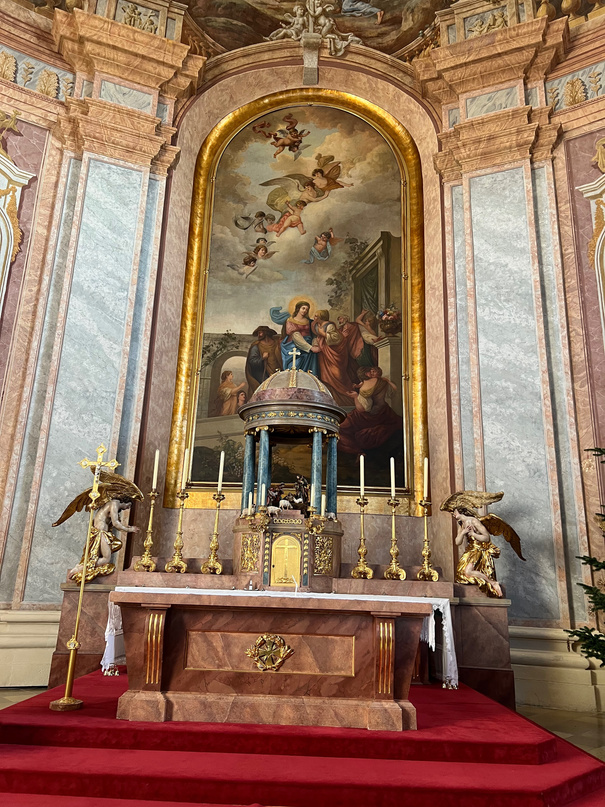
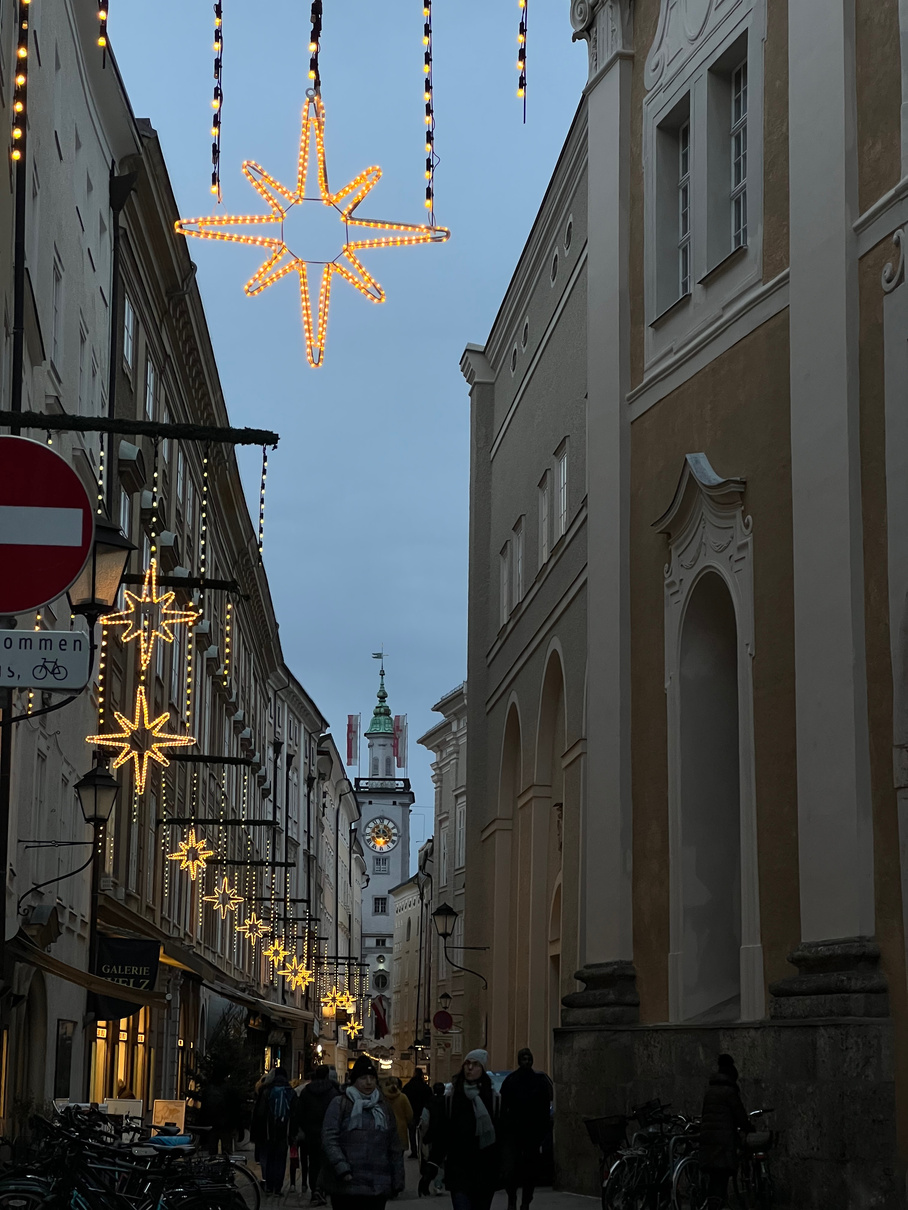
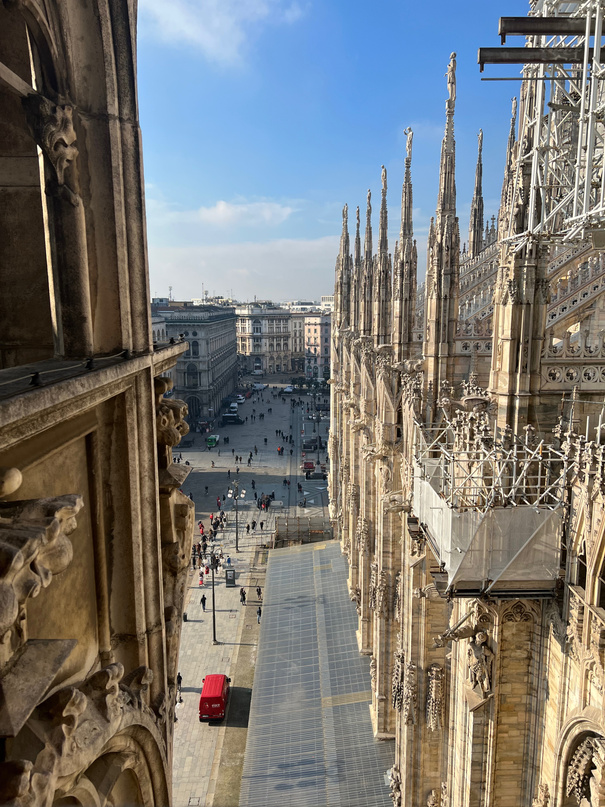
Grazie!
